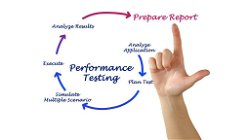How to Create a Small Business Marketing Plan in Simple Steps?
Vikash Jain
. 2 min read
Imagine two online retailers. One makes custom greeting cards by hand using a mixture of woodcuts, watercolor, and calligraphy. Their prices are remarkably fair for what they offer, and their customers adore their work. However, this retailer has no marketing plan and relies on word of mouth to let people know about their cards. The second seller, however, buys premade cards in bulk and sells them at a 50% markup on eBay. There is no personalization, and the price is relatively high compared to similar generic cards on the market. As a result, their sales thrive, even with a higher price point, as customers appreciate the added value and personalized attention they receive through online chat interactions.

Email Marketing
Email is a great way to market your small business. It’s quick, easy, and inexpensive to set up a newsletter or email campaign. Plus, you can use it to showcase your products and services and bring people back to your website. Email marketing also allows you to target specific groups of customers based on your analytics data, which can help to improve your ROI.
- Use a newsletter to build relationships with customers.
- Send coupons and discounts using email marketing.
- Use email marketing to promote special events.
- Offer freebies or discounts in exchange for an email address.
- Give people more than one way to opt-out of receiving your emails.
Google Adwords
Google Adwords is sort of the godfather of online marketing channels. It’s been around a long time. It’s competitive. It’s expensive. And if you know what you’re doing, it can work very, very well for you. Despite being a paid channel, Adwords’ goal is still to deliver relevant search results to users, and as a result, it will be less expensive for you when you are utilizing proper on-page SEO.
Understand your Competitors Better
Your competitors are online chances are, they’ve already put some thought into their social media presence. By taking a look at what they’re doing, you can not only get some ideas for your own strategy, but you can learn what’s working well for them and what isn’t.
Run a Contest
Running a contest is one of the best ways to build consumer awareness and get your company’s name out there. Plus, they’re lots of fun. You can give away some of your products and services in exchange for getting people to:
- Submit videos or photos for a chance to win
- Pen an essay about a topic of your choosing
- Leave a review in exchange for entry
- Refer others for more contest entries
- Provide an email address in exchange for an entry
Frequently Asked Questions (FAQs)
How Much Should a Small Business Spend on Marketing?
It depends on who you ask, but if you prefer to err on the side of caution, most financial institutions agree that for business-to-consumer companies, spending about 5%-10% of your revenue on marketing is a prudent range.9
How Do You Develop a Marketing Plan for a Small Business?
There are many tools and resources available for free online. The U.S. Small Business Administration offers general guidance in a well-organized format.10 SCORE matches small business startups with mentors, for a more personalized approach.
What Is a Positioning Strategy?
A positioning strategy, or market positioning, describes the way you will distinguish your brand or product's image from competitors. It influences your buyers' perception in very specific, strategic, and artful ways, to create a brand or product identity.
More Stories from
Factors to Consider When Purchasing a Motorcycle: A Comprehensive Guide
This article provides insights and tips on factors to consider when purchasing a motorcycle.
Editors' Choice for 2023: Top Pickup Trucks for Any Job
The article discusses how modern pickup trucks have evolved to become more than just workhorses with luxurious features.
Unlocking Business Growth: Harness the Power of Web Solutions
Embrace the power of the internet to unlock your business's true potential and propel it towards unprecedented growth.
Embracing the Remote Work Revolution: Pros and Cons for Businesses and Employees
This article explores the significant growth of remote work over the past decade, driven by technological advancements and changing work cultures.
A Comprehensive Guide to Performance Testing: Stages, Metrics, and Tools
It explores the importance of performance testing in the development lifecycle, the types of performance testing, and the metrics used to measure performance.









.png?width=40&aspect_ratio=1:1)
.png?width=40&aspect_ratio=1:1)

